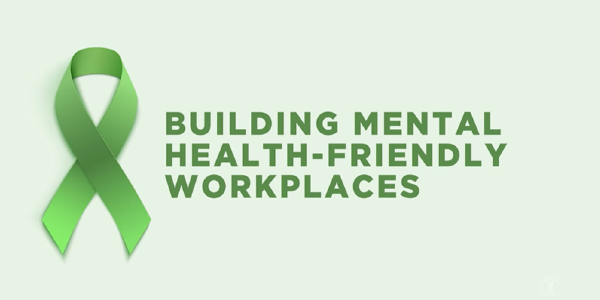Mental Health at Work: Raising Awareness of Current Resources

This Mental Health Awareness Month marks the launch of the Labor Department’s Mental Health at Work initiative, including a new webpage promoting numerous tools and resources. This initiative will advance wellness in the workforce by reducing stigma and increasing awareness of mental health and wellbeing within workplaces; promoting best practices and compliance by employers; and promoting mental health equity and access, especially for marginalized and vulnerable populations.
Two related aspects of mental health in the workplace are critical to this initiative. First is a focus on creating positive work environments, where worker needs are met. High-quality jobs that provide safe workplaces, fair pay, paid leave, benefits and opportunities for all team members to be heard form a baseline for employee mental health. Second is supporting employees and colleagues who require care for a mental health condition or substance use disorder. Treating mental health care the same as other medical conditions, in accordance with mental health parity law, helps create a culture where the spirit of supporting the health needs of all workers can flourish. Equity must be woven into such efforts, including in how mental health and substance use disorders are handled in the workplace, and in understanding how lived experiences can impact the mental health needs and treatment of different groups.
Mental health needs are extremely common. One in 5 American adults experience mental illness every year. According to the most recent federal data, more than 46 million people in America experienced a substance use disorder in the previous year. Suicide is a leading cause of death in the United States. The COVID-19 pandemic exacerbated rates of anxiety, depression and substance use disorder, as well as workplace stress and burnout. In ADP’s annual People at Work survey, almost half of workers said that their work is suffering because of poor mental health. Yet there can also be significant stigma around mental illness, including in the workplace, and insufficient access to timely treatment.
Employers play the most critical role in creating environments where workers are as comfortable seeking support for treating mental health conditions as they are with all other ailments. This is especially important in industries where mental health and substance use conditions are most prevalent, such as construction and mining.
Employment is recognized as a key social determinant of health. Job quality is an important factor in a person’s mental health and ability to access treatment for mental health conditions. While workplace stress and poor job quality can negatively affect workers’ mental health, workplaces can also provide important connections to resources, supports, accommodations, and benefits designed to improve our mental health and facilitate equitable access to treatment.
Read up on the resources that are available now to improve overall mental health in the workplace, such as OSHA’s new workplace stress toolkit. Share the link to dol.gov/MentalHealth to spread the message to friends, colleagues and through professional networks. Starting this month, let awareness lead to actions that make permanent positive changes to workplace culture nationwide.
Tanya Goldman is a counselor to the secretary of labor.
McGinnis.Laura…
Mon, 05/01/2023 – 08:47


Comments are closed.